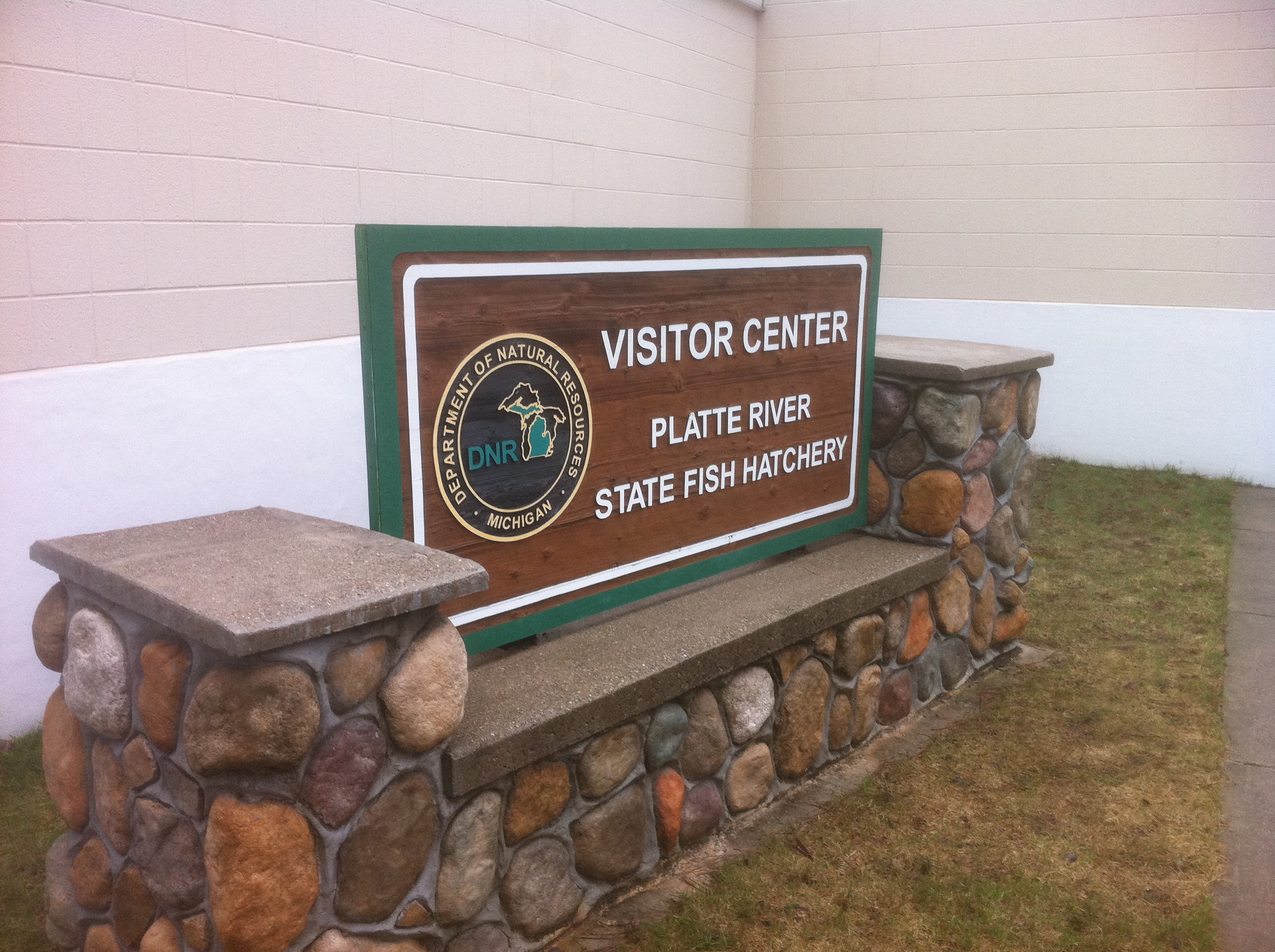Our partnership with the hatchery
The PLIA and the Platte River State Fish Hatchery: A study of partnership and success

The cooperative and constructive working relationship between the PLIA, the Implemention Coordinator (Dr. Ray Canale, an environmental engineer and limnologist), and MDNR personnel has been the key factor that has led to the restoration of Platte Lake. The hatchery was built in 1928 as a fish rearing station using about 63,000 pounds of low phosphorus fish food annually. In the mid-sixties the hatchery operation was significantly expanded, primarily to deal with an increasing great lakes alewife population. Up to 450,000 pounds of high phosphorus food began to be used each year. Any uneaten food and all other waste from the hatchery was discharged largely untreated into the Platte River. Phosphorus is a very powerful stimulator for algae growth.
As a result Platte Lake suddenly became a reservoir for an enormous phosphorus load, a load significantly in excess of that normally supplied by the watershed. The lake changed immediately. Tons of phosphorus from years of neglect still remain, like a sleeping giant, in the bottom sediment of the lake.
The PLIA was formed in 1978 and immediately began working to stop this dramatic decline of our lake. Over the past 38 years, the PLIA has assumed an ever more active role in the functioning of the hatchery. What used to be 4,321 pounds of phosphorous discharged annually into the lake has now dropped to 60 pounds with no adverse effect on hatchery operations. Fish are fed low phosphorus diets and on a feeding schedule optimized to maximize fish health and growth while minimizing food usage. All wastewater now is treated with ferric chloride to decrease phosphorus content. The hatchery filters and collects all solid waste and transports it outside the Platte River watershed.
Importantly, under Dr. Canale’s expert guidance, with PLIA help, hatchery personnel have developed standard operating procedures for all aspects of the hatchery operation, sample collection and analysis. The PLIA is working directly with the MDNR to plan future sampling efforts and together are developing better sampling and testing techniques. The working relationship between Dr. Canale, MDNR personnel (led by Mr. Gary Whelan), and the PLIA since the March 2000 Settlement Agreement has been exemplary and has evolved into a mutually supportive cooperative relationship producing peer-reviewed research that will benefit fish hatchery operations not just in Michigan but worldwide.

